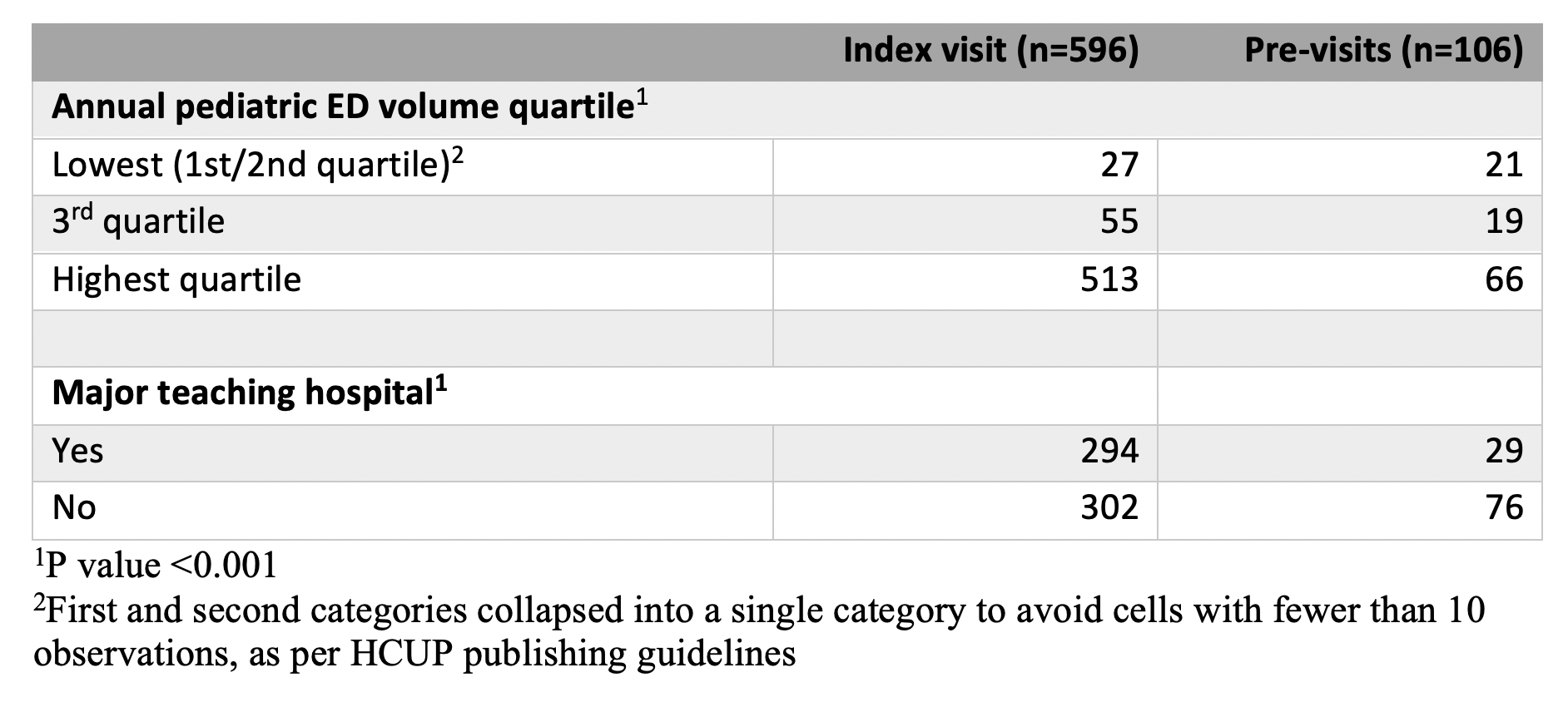Emergency Medicine: All Areas
Emergency Medicine 14
382 - Missed Opportunities: ED visits Preceding a Diagnosis of Pediatric Deep Neck Space Infection.
Publication Number: 382.405
- KJ
Kaileen Jafari, MD (she/her/hers)
Assistant Professor
University of Washington School of Medicine
Seattle Children's Hospital
Seattle, Washington, United States
Presenting Author(s)
Background: Deep neck space infections (DNI), including retropharyngeal and paraphyrngeal abscesses, are uncommon but potentially life-threatening infections in children. Reports of missed diagnosis of DNI are common in the literature, as symptoms and exam findings can be subtle. No study to date has comprehensively assessed emergency department(ED) visits prior to DNI diagnosis in children as a tool for characterizing potential missed diagnosis of DNI.
Objective:
(1) To identify the frequency and characteristics of ED visits in the week prior to pediatric DNI diagnosis; (2)To compare patient and hospital characteristics of DNI cases with and without a preceding ED visits (pre-visit).
Design/Methods:
Cross-sectional analysis of ED and inpatient visits from the 2018 and 2019 Health Care Utilization Project (HCUP) State Emergency Department Datasets and State Inpatient Datasets from New York, Maryland, Wisconsin and Florida. We defined index visits for pediatric DNI as a primary/secondary or tertiary diagnosis of DNI ( ICD10 code J39.0) in patients 0-17 years, resulting in admission or transfer ( Fig. 1). We linked index DNI visits with ED visits in the 7 days prior to DNI diagnosis (defined as “pre-visits”) using synthetic patient linkage variables, according to HCUP recommendations. We compared demographics of patients with and without a pre-visits, and hospital characteristics of pre-visits and index visits. Chi-square/ANOVA were used to compare categorical variables.
Results:
There were 596 index visits for DNI, and 106 (17.8%) had one or more ED visits in the week prior to DNI diagnosis. The most common diagnoses in the pre-visit included pharyngitis/tonsillitis(24.8%), viral illness(22.2%), and lymphadenitis(12.9%). Non-white patients made up a significantly higher proportion of the pre-visit group compared to the no pre-visit group (65 vs. 54%, p< 0.05) (Table 1). Compared to index visits, pre-visits were significantly more likely to occur in lower pediatric-volume EDs ( 19.8 vs. 4.5%, p< 0.001) and non-teaching facilities (72.4 vs. 50.7%, p< 0.001) (Table 2).
Conclusion(s): Over 17% of pediatric DNI patients had an ED visit within 7 days prior to DNI diagnosis. Pre-visits were more common in lower pediatric volume centers, non-teaching facilities, and non-white patients, suggesting a potential opportunity for earlier diagnosis particularly in racial/ethnic minorities and non-pediatric EDs. This study was limited by constraints of secondary data analysis, however further research to identify clinical decision tools to support pediatric DNI diagnosis are needed.

.png)
.png)
